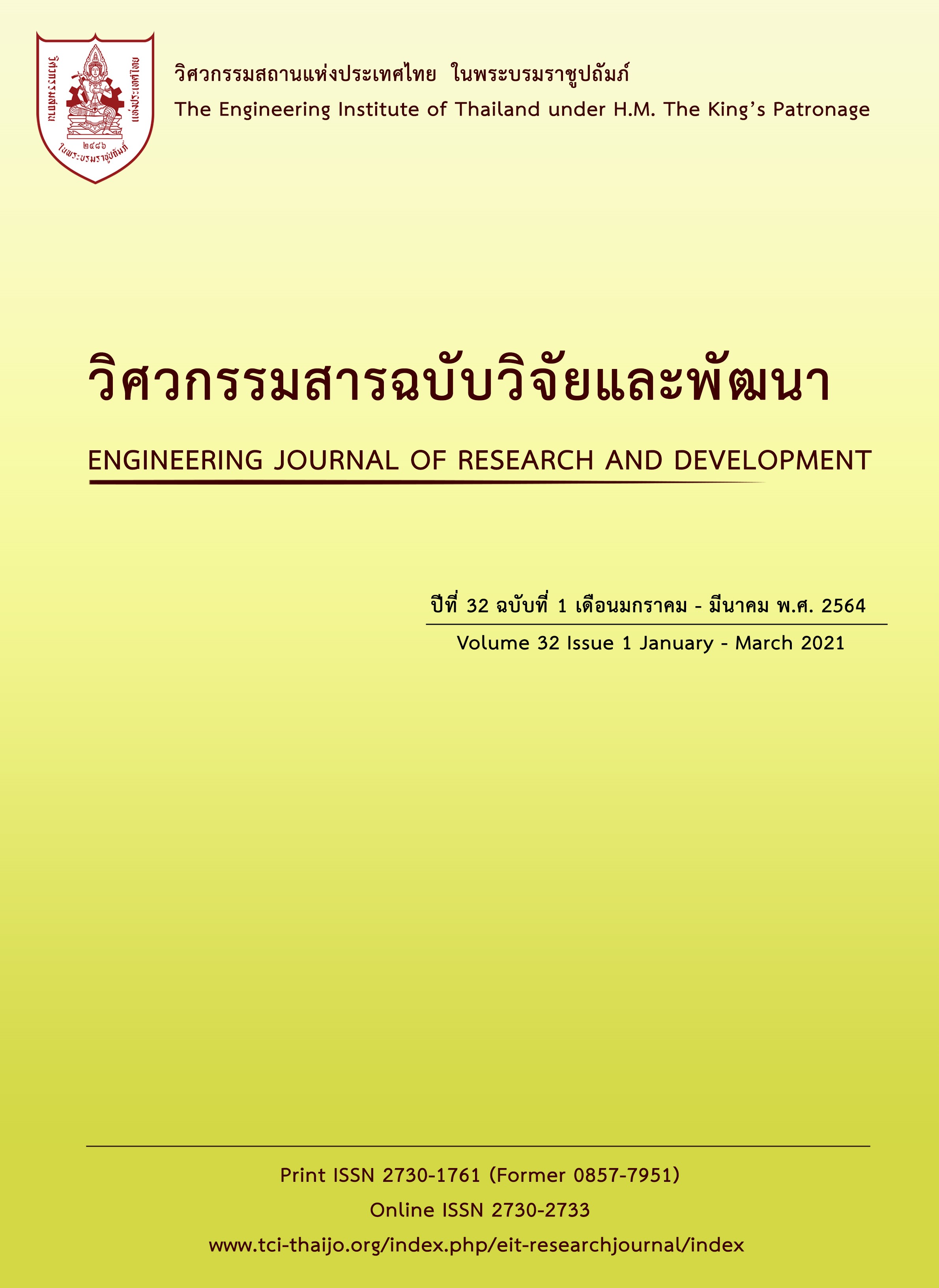WEATHERING SIMULATION OF FOUR THAI SANDSTONES UNDER DRY, WET AND ACIDIC CONDITIONS
Main Article Content
Abstract
Weathering simulations have been performed on four sandstone types by subjecting them up to 300 heating-cooling cycles. Three cooling conditions are imposed on three separate sets of specimens prepared from each sandstone type: air-cooling, submerging in distilled water and in sulfuric acid (pH = 5.6). Results indicate that all sandstones are insensitive to heating-dry cooling cycles. They are however highly sensitive to water and particularly to acid. Such rapid cooling in liquid induces micro-cracks in the cementing materials, which become preferential paths allowing liquid to penetrate deeper into the specimens. As the cementing materials are dissolved by the liquids, the sandstone density, strength and stiffness decrease as the simulation cycles increase. The findings can be useful for the selection criteria and application of these sandstones in the construction and decoration industry.
Article Details
The published articles are copyright of the Engineering Journal of Research and Development, The Engineering Institute of Thailand Under H.M. The King's Patronage (EIT).
References
[2] Zhou, Z. et al. Influence of cyclic wetting and drying on physical and dynamic compressive properties of sandstone. Engineering geology, 2017, 220, pp. 1-12.
[3] Pardini, G. et al. Structure and porosity of smectitic mudrocks as affected by experimental wetting-drying cycles and freezing-thawing cycles. Catena, 1996, 27(3-4), pp. 149-165.
[4] Sumner, P. D. and Loubser, M. J. Experimental sandstone weathering using different wetting and drying moisture amplitudes. Earth Surface Processes and Landforms: Journal of the British Geomorphological Research Group, 2008, 33(6), pp. 985-990.
[5] Özbek, A. Investigation of the effects of wetting-drying and freezing-thawing cycles on some physical and mechanical properties of selected ignimbrites. Bulletin of Engineering Geology and the Environment, 2014, 73(2), pp. 595-609.
[6] Khanlari, G. and Abdilor, Y. Influence of wet-dry, freeze-thaw, and heat-cool cycles on the physical and mechanical properties of Upper Red sandstones in central Iran. Bulletin of Engineering Geology and the Environment, 2015, 74(4), pp. 1287-1300.
[7] Lee, S. The third periodic report on the state of acid deposition in east Asia, Part II National Assessments. Acid deposition monitoring network in east Asia, Niigata-shi, Japan, 2016.
[8] American Society for Testing and Materials. ASTM C127-15. Standard Test Method for Relative Density (Specific Gravity) and Absorption of Coarse Aggregate. ASTM International, West Conshohocken, PA, 2015.
[9] American Society for Testing and Materials. ASTM C293 / C293M-16. Standard Test Method for Flexural Strength of Concrete (Using Simple BeamnWith Center-Point Loading). ASTM International, West Conshohocken, PA, 2016.
[10] American Society for Testing and Materials. ASTM D7012-14e1. Standard Test Methods for Compressive Strength and Elastic Moduli of Intact Rock Core Specimens under Varying States of Stress and Temperatures. ASTM International, West Conshohocken, PA, 2014.
[11] Department of Mineral Resources. Geology of Thailand. Department of Mineral Resources, Ministry of Industry, Bangkok, Thailand (in Thai), 2001.


